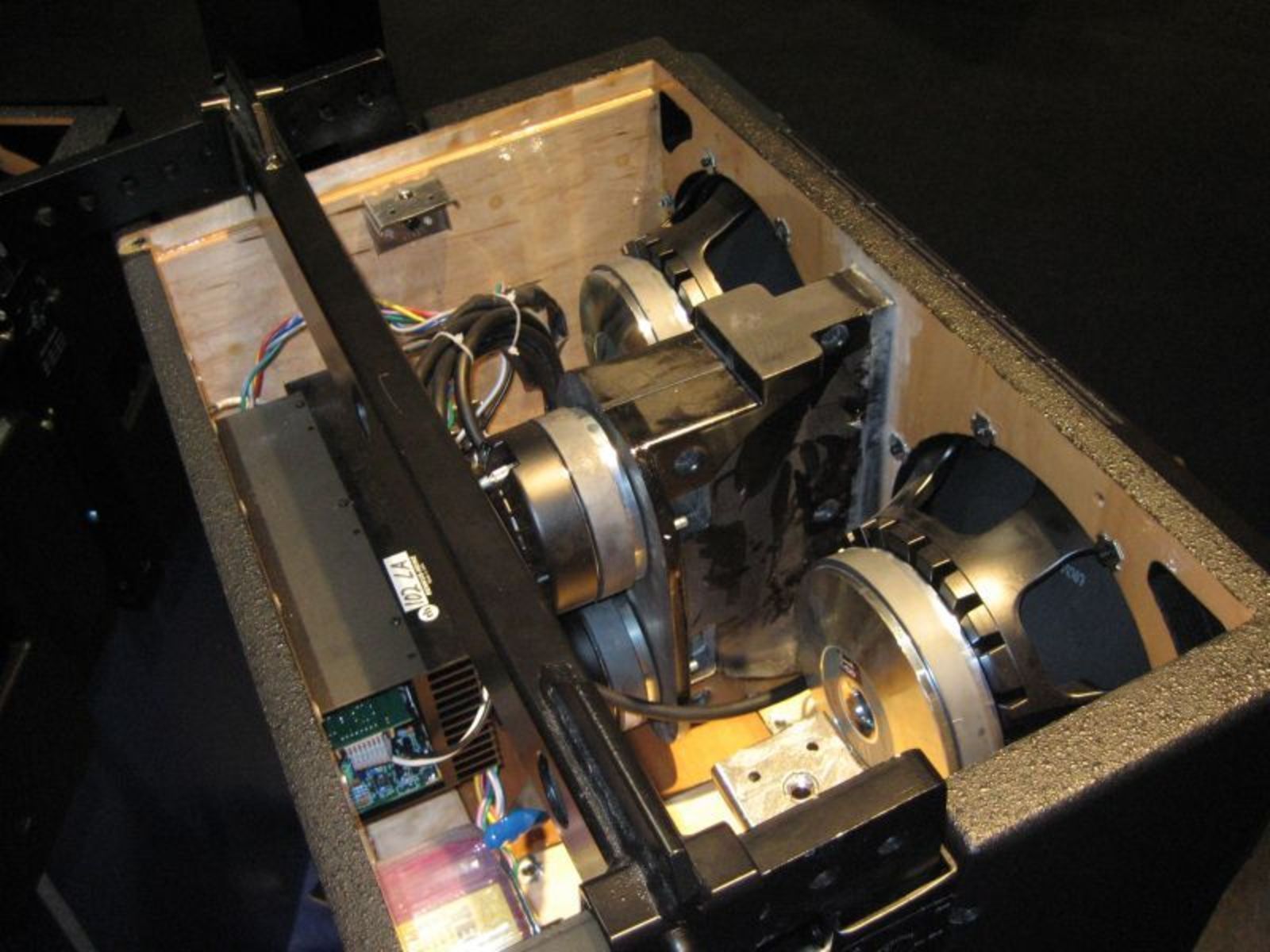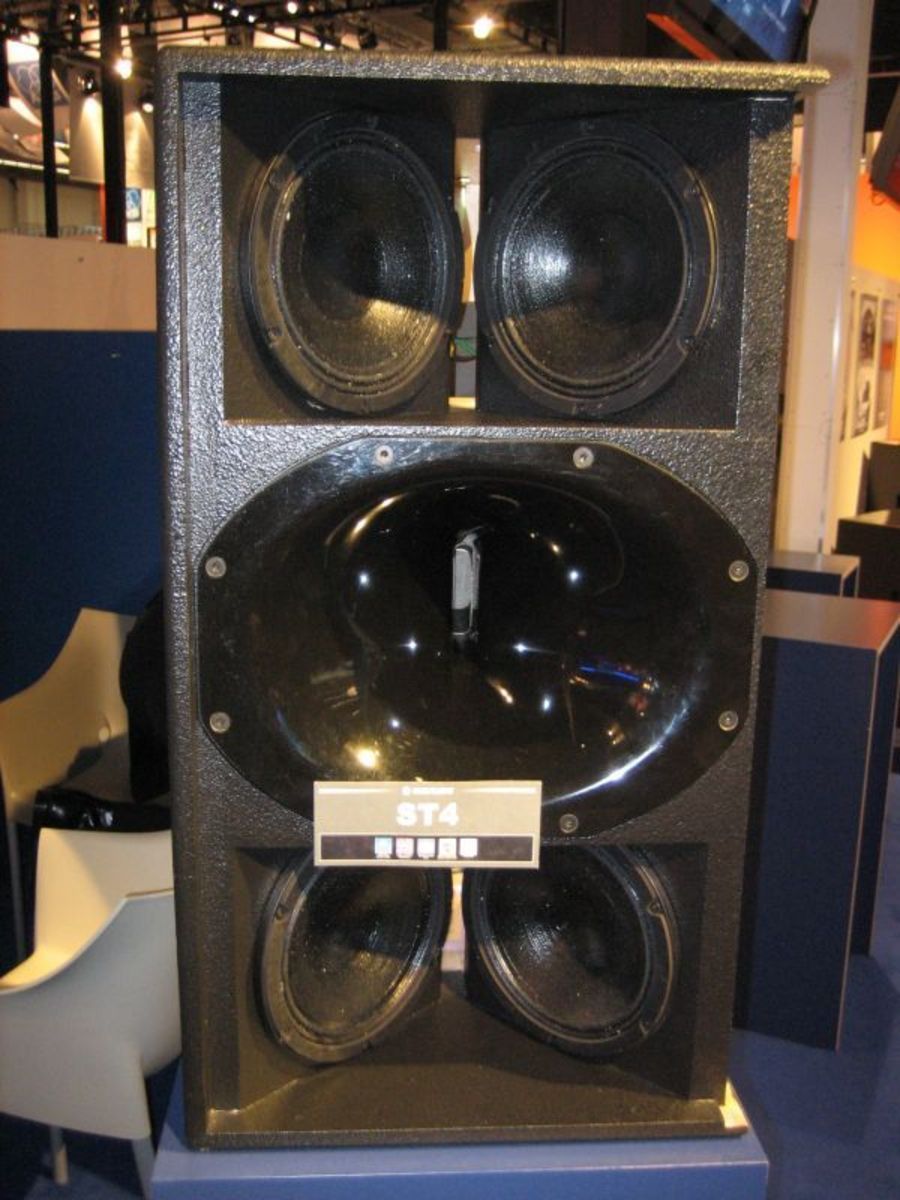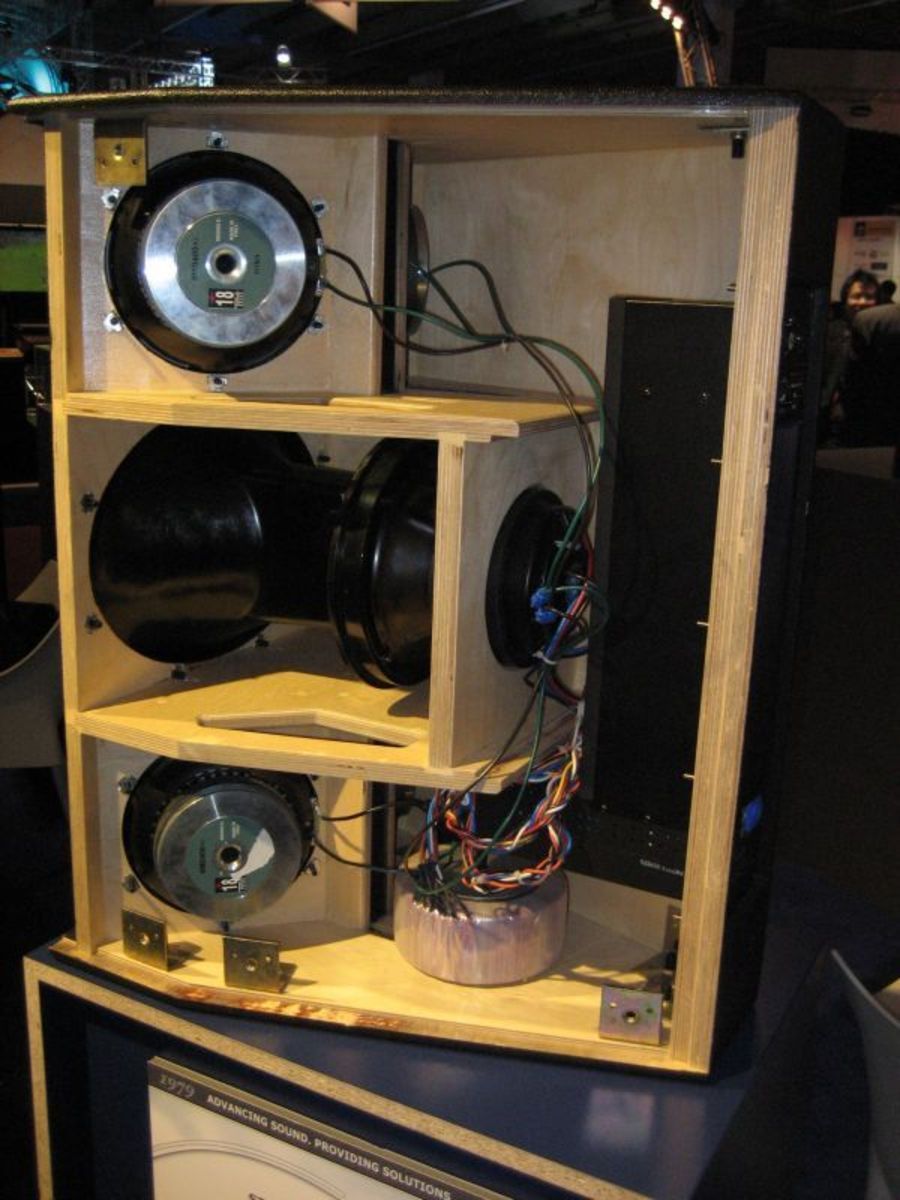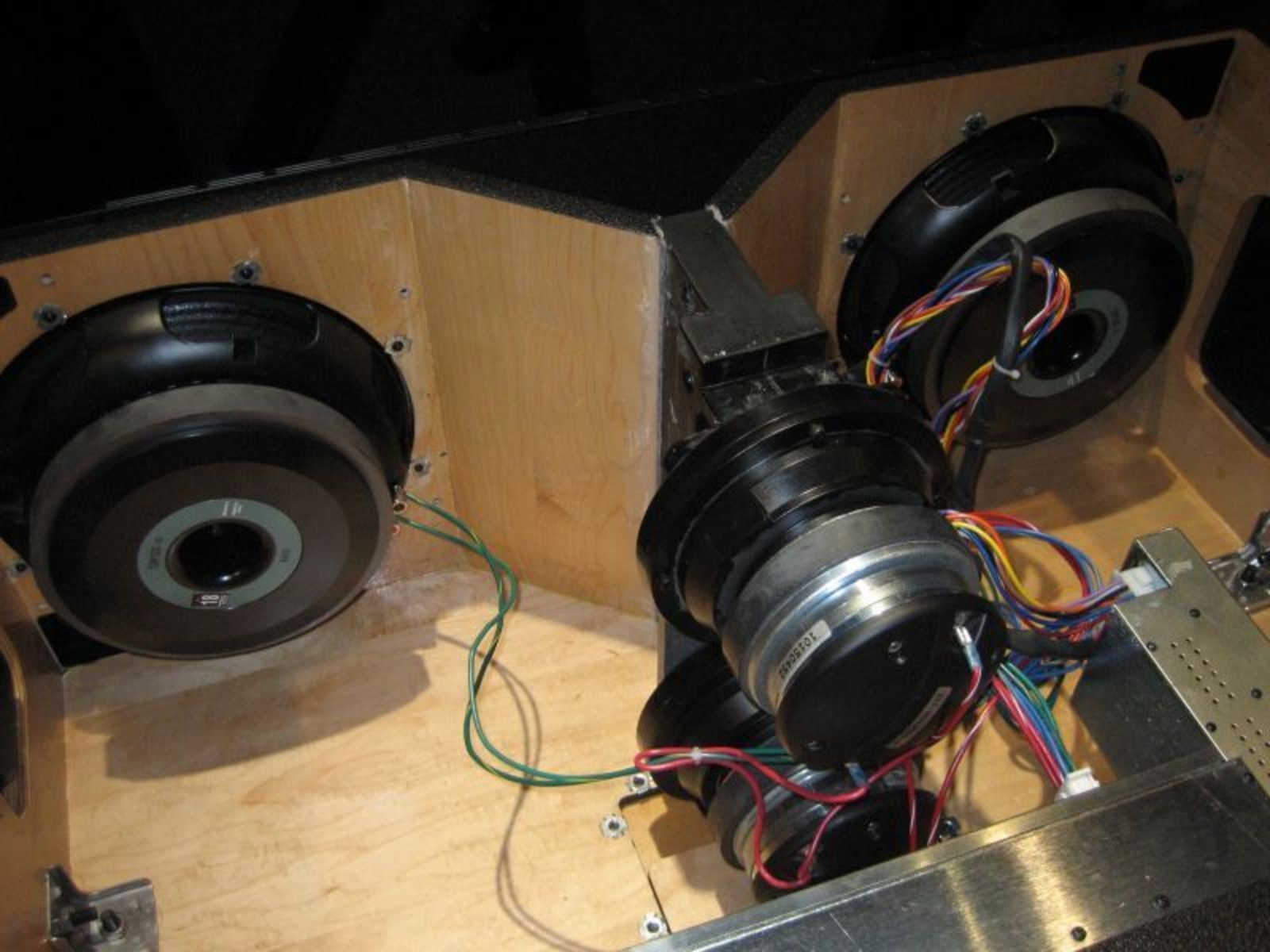Yes everyone. It's especially pesky when someone gets it right though. We had a newscaster here that managed to get a law degree without attending law school. Well needless to say they plugged that hole up as fast as possible. It does get easier to DIY something nice when you have great models. I look upon your very nice speakers as great models.
I'm not so dense that I didn't understand what you were referring to. But what you responded with is what everyone says about their speakers - just fill in the blanks.
Fundamentally, the synergy concept is not flawed in any way. The only problem might be smoothness of response. Tom has already said that with more components in the crossover or digital EQ, one can obtain the required smoothness.
The problems that I see with the synergy concept are mostly diffraction. Diffraction is not correctable with electrical EQ no matter how complex. Only a design that has no diffraction can be globally corrected with EQ'd. This is a huge distinction - but alas one that very few seem to understand.
It does get easier to DIY something nice when you have great models. I look upon your very nice speakers as great models.
It's all about data, not guessing. When I see the data that shows a superior design I will acknowledge on it right away. (I did just that with some of the Behringer designs - for the money they were exceptional, and I said so.) But guesses and accolades based on subjective impressions - that's not worth pursuing.
Silly me I am actually assuming that full range 3 way speakers have inherent advantages in the midrange due to driver physics. Well wot be the first time I've been very very wrong.
The problems that I see with the synergy concept are mostly diffraction. Diffraction is not correctable with electrical EQ no matter how complex. Only a design that has no diffraction can be globally corrected with EQ'd. This is a huge distinction - but alas one that very few seem to understand.
How have you came to the conclusion that the amount of diffraction present in a Synergy horn is objectionable, or even audible if that data is not available? Why insist something needs to be corrected when there is no data suggesting that it is audibly significant?
John, what are the speakers in the last pic you posted?
That is the Danley model J1-94 Jericho horn.
Of course. No one is allowed to listen to speakers and make any sort of assessment. Do they sound Good? Bad? Normal? Novel? Please do not report what you hear, it is rubbish.But guesses and accolades based on subjective impressions - that's not worth pursuing.
Of course. No one is allowed to listen to speakers and make any sort of assessment. Do they sound Good? Bad? Normal? Novel? Please do not report what you hear, it is rubbish.
There's something worse underlying this..
Provide the objective measurements. Report clear advances in improved objective characteristics (which of course is a subjective process interpreting those results even if one try's to be objective) - and then... what?
Right back to the subjective assessment, or you know - listening.
..and low and behold:
*It sounds better* ..which of course must be from the objective improvement.
Yup, confirmation bias.
-sort of a "Mobius strip" thought-process. 😉
Nice term, I like it.T-sort of a "Mobius strip" thought-process.

And much, much to your credit. The industry has been slighting that companies products on *sonic merit* for years and it's complete BS. They are ultra competitive, shameless copy cats and have in the past have had quality control issues. But sonically flawed? BS, Period.
It's all about data, not guessing. When I see the data that shows a superior design I will acknowledge on it right away. (I did just that with some of the Behringer designs - for the money they were exceptional, and I said so.) But guesses and accolades based on subjective impressions - that's not worth pursuing.
I am certain that only a newcomer to this forum would ever assume or remotely suggest that people here do not do research before they attempt to design a speaker, because that assumption would be quite arrogant given the very nature of this place. 😀
Of course. No one is allowed to listen to speakers and make any sort of assessment. Do they sound Good? Bad? Normal? Novel? Please do not report what you hear, it is rubbish.
Ok then, 2 way speakers are the best . There is no tangible benefit to having a dedicated mid range driver as this area can be successfully split, without any significant audible compromise at all, between a single direct radiating cone speaker and a compression driver on a "hornguide thing". Learning all the time. Got it, thanks.
I am waiting to see measurements that show that this approach is better than the others on the table. A two way system done with a waveguide and direct radiator can have no lobes in the horizontal, which is by far the most important and only a single lobe over a very narrow band of frequencies at the crossover. Beyond this singular flaw it can have a much smoother response both in frequency and in space than what I have seen from the synergy approach. In a small room I will take the smoother response. In a large room that cannot be covered by a single set of speakers then I would take the tradeoff of the synergy approach because dual sets of speakers will have serious lobe problems.
The problems that I see with the synergy concept are mostly diffraction. Diffraction is not correctable with electrical EQ no matter how complex. Only a design that has no diffraction can be globally corrected with EQ'd. This is a huge distinction - but alas one that very few seem to understand.
That's probably the most notable thing about my Summas. There is something about them that lends itself to loooooong listening sessions. It's the only speaker I've ever owned that I'm comfortable listening to for four, eight, even twelve hours in a row. And often at very high volumes.
How have you came to the conclusion that the amount of diffraction present in a Synergy horn is objectionable, or even audible if that data is not available? Why insist something needs to be corrected when there is no data suggesting that it is audibly significant?
It's kinda funny that there's a loudspeaker which combines both Danley's and Geddes' innovations, but doesn't get much fanfare here. The Renkus Heinz speakers. If I'm not mistaken, they were doing Unity-type speakers before Sound Physics Labs was. (I think they're even cited in the Unity patent? Too lazy to look it up.)
Originally Renkus Heinz had multiple midranges on a rectangular-mouthed horn, but over time they adopted coaxial drivers on what is basically an elliptical oblate spheroidal waveguide.
An externally hosted image should be here but it was not working when we last tested it.




^^^ some pics of their evolution.
An externally hosted image should be here but it was not working when we last tested it.
An externally hosted image should be here but it was not working when we last tested it.
Yorkville Unity and Renkus Heinz for comparison
It's funny. When you see the Unity horn like this, you almost have to believe that this would be the *real model* for an actual commercial hifi use of the Danley concept, Given the apparent ummmmm.... "weakness" for dedicated mid range drivers high SPL's and blatant acceptance of the limitations of Schroeder/size restrictions on woofers, this might be an acceptable compromise for ME's
Oh crap. Now a gut instinct is telling me that the Unity horn could be perfected for hifi use, sort of what I've been trying to say/ask here anyway. And we all know how much gut instincts emanating from the speaker proletariat are reviled (-:
Of course. No one is allowed to listen to speakers and make any sort of assessment. Do they sound Good? Bad? Normal? Novel? Please do not report what you hear, it is rubbish.
funny, reminded me of an interview I read, years ago, with Ross Walker of QUAD. When asked where is the listening room, a room for "listening tests", at the QUAD factory facilities, Ross answered: "Why? What for? We haven't any. We listen to music at home. Here we only measure speakers" 😛
It's funny. When you see the Unity horn like this, you almost have to believe that this would be the *real model* for an actual commercial hifi use of the Danley concept, Given the apparent ummmmm.... "weakness" for dedicated mid range drivers high SPL's and blatant acceptance of the limitations of Schroeder/size restrictions on woofers, this might be an acceptable compromise for ME's
An externally hosted image should be here but it was not working when we last tested it.

Here's a couple of cross sections for comparison. I can't tell what driver Renkus Heinz is using. According to their literature, it's a 6.5" coax. The woofers are 18Sound.

If I'm not mistaken, Danley is using the BMS 5C150 in the molded synergy horns
- Status
- Not open for further replies.
- Home
- Loudspeakers
- Multi-Way
- Synergy Horns. No drawbacks, no issues?